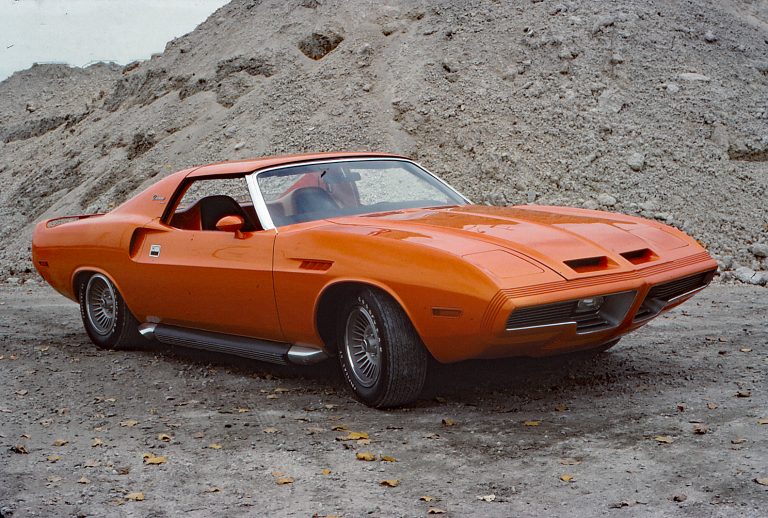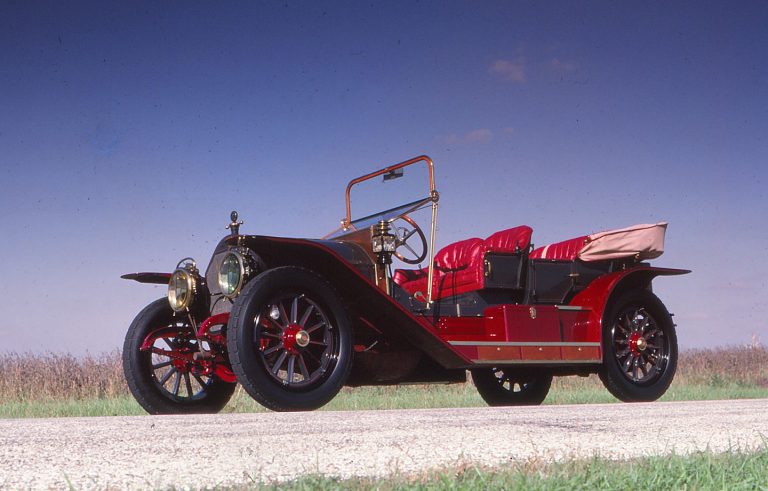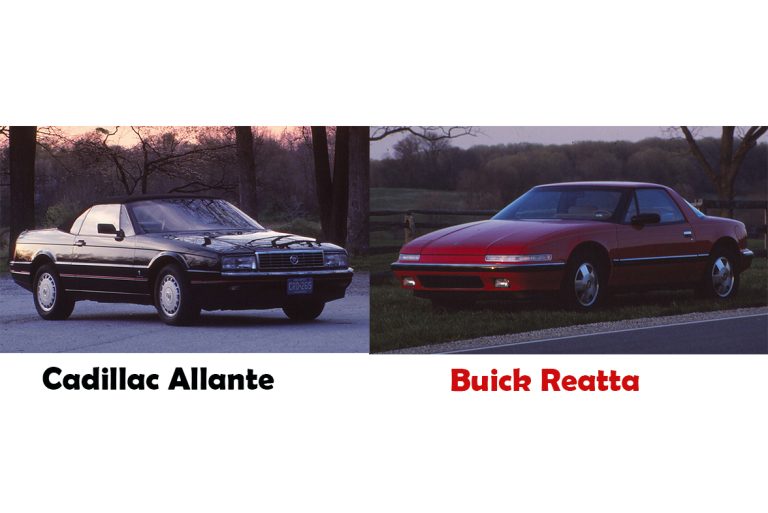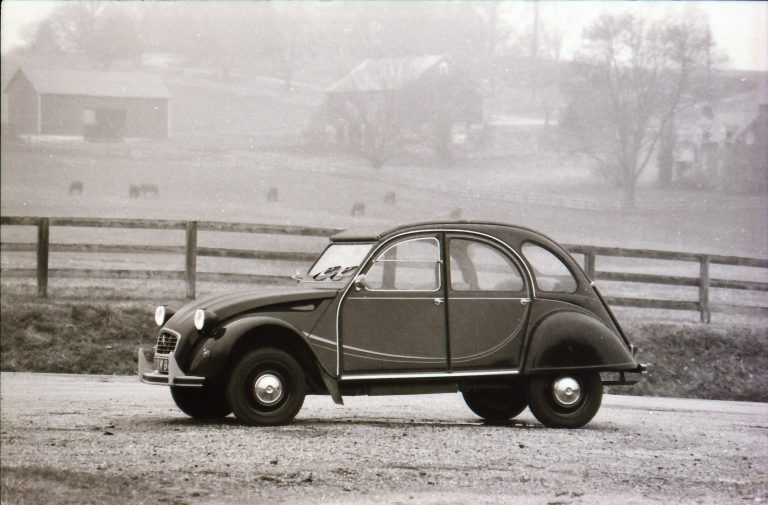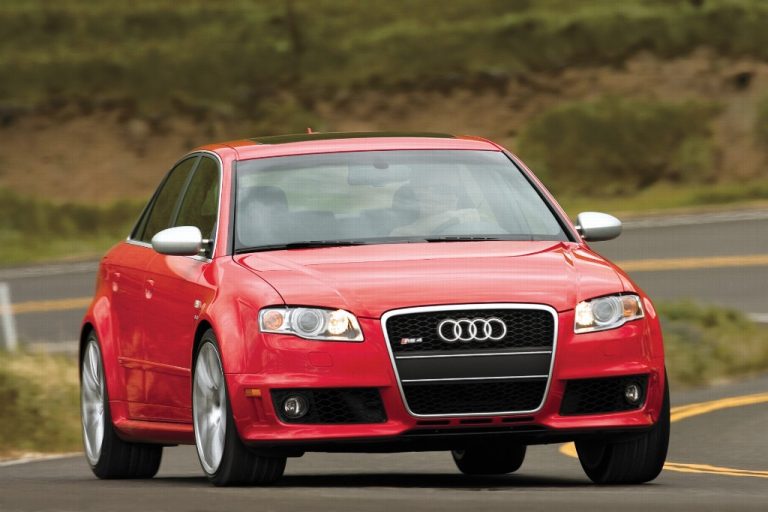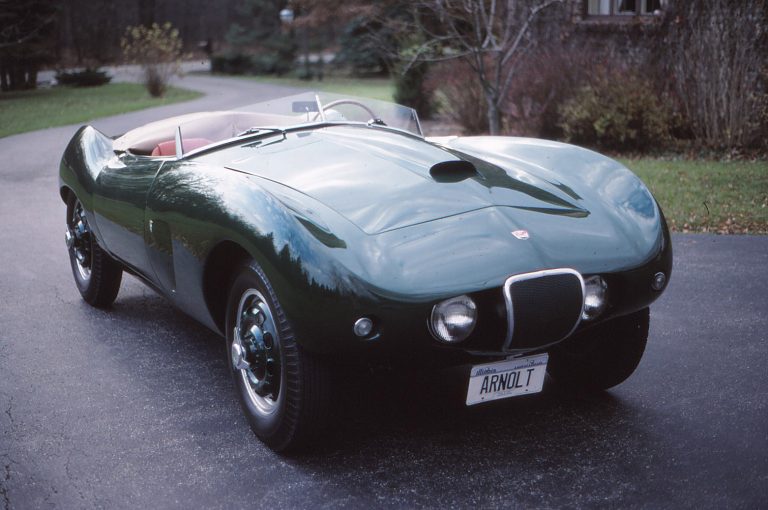History/driving impressions originally published in AutoWeek April 30, 1990; republished by the author
Dreams are wisps of fantasy, but to the true believer they’re as tangible as steel.
The Asardo was Helmut Schlosser’s dream and its name an acronym of American Special Automotive Research and Development Organization. Schlosser was a naturalized American of Austrian birth and the manager of a small machine shop in North Bergen, New Jersey. Also a sports car enthusiast, having owned an 1100 Stanguellini-powered Siata, he knew what he liked in a car, and also knew, he thought, what others should like.
The plans were on paper in 1957: The frame and gullwing door layout from the Mercedes 300SL coupe, the front end of the 300 S Maserati, the high Kamm-inspired tale of some Farina Ferraris, as Karl Ludvingsen noted in a 1959 Sports Cars Illustrated article.
Creation of the body began in 1958, Schlosser calling that the “summer of sanding.” Only after he was satisfied that the full-scale fiberglass body equaled the appearance of his drawings and small plaster model did he begin construction of the space-frame chassis, a cross-braced maze of tubing rivaling that of the 300SL. Suspension and engine would come from Alfa Romeo, perfectly suitable and definitely easier than creating either on a modest budget. The engine rested well aft in the chassis, 17.5 inches further back than in an Alfa Spider. The driver set just ahead of the rear wheels in an 88-inch wheelbase. With driver and a full tank of gas, 52.5% of the weight was on the rear wheels. Dry weight was 1500 lbs.
To avoid competition with racing Alfas, the 1300 Giulietta engine was bored out to 1485 mL, placing it in the 1.5-liter class. Schlosser tweaked the engine (and added a neat side pipe) for an estimated 135 HP at 6800 rpm. The standard four-speed Giulietta gearbox was also used, along with the Alfa rear axle and front and rear Al-fin drum brakes. Production parts were used where possible, such as a cut-down Karmann-Ghia windshield, 300SL door mechanisms and the stock Alfa worm-and-ball steering.
The prototype was taken to Lime Rock with a stock 1300 cc engine and off the trailer lapped it 1:16, with 1:12 seen as possible with a well-tuned 1300. That compares, Ludvigsen noted, with Bob Grossman’s 1:14.8 in an Alfa Spider Veloce.
Ludvigson was convinced that the Asardo 1500 AR-S, as it was known, was a “knowledgeable man’s serious project that could be a basis for a fine production sports car.” From the 1959 New York Auto Show, Schlosser had “firm orders for a dozen cars” at $5,875 and was prepared to build two per month. The show program even listed an Asardo 1500 PRS, with rear-mounted Porsche power.
But Schlosser’s original backers wanted to sell the cars without engines, the buyer choosing. Schlosser objected and the backers dropped out. He later admitted he could have taken deposits and gone into production anyway, but as he told Sports Car Graphic, “I didn’t want to produce two or three cars; I wanted to make two or three hundred.”
Schlosser spent most of 1960 touring Europe with the Asardo, looking for an angel. But finding only near-misses, he dejectedly returned to the U.S. late in the year. The debut of Buick’s 215 cid aluminum V-8 provided enough hope to keep the dream alive. With it, the Asardo could be more powerful, completely American and easier to produce.
Work began with minor body modifications in the summer of 1961, but a family illness called him to Europe where, ironically, he was hospitalized after being struck by a car. He didn’t return until December.
Fortunately, SCCA racer Charlie Kolb arranged financing (through Overkeys Motors, a VW and Porsche dealer in Perrine, Florida,) for converting the Asardo 1500 AR-S into the Asardo 3500 GM-S. It would be a relatively simple task to make more room for the wider engine, and a Buick V-8 was no heavier than the Alfa four. Though a Corvette four-speed was considered, the Buick unit was used as an expediency. It came with the engine. Marginal with the V-8’s torque, the Alfa rear end was kept in deference to handling.
SCG tested the converted Asardo (in its June ‘65 issue) and recorded a 0-60 mph time of 4.8 seconds using second gear only, about six seconds with first and second (a desire to not scatter the Alfa rear prompted such caution). Handling was deemed “well-nigh flawless.” The only complaints concerned slack in the universals needed for the steering shaft to clear the engine and the fear of drum brake fade under hard use.
About this time, Schlosser dropped from the scene, and Kolb sold the Asardo. Raced by Hank DuPont and Chuck Foster, it went through two more owners before Norman Carrigan bought it in 1975. It was by then in said shape, so he restored it, adding a radio, swapping the Borrani wires for Alfa discs and wider tires, and painting it white over the original red. He sold in January 1992 Joshua Tevaro of Providence, Rhode Island.
Like that other gullwinged sports car, the Asardo isn’t easy to enter. Once in, there’s no adjustment. Headroom is adequate but the Nardi steering wheel is too close. Foot room is tight and the throttle pedal is a big-toe-only affair. The left-side mirror is blocked by the A-pillar and the angled plexiglass backlight is hard to see through. Only the shifter is where it belongs.
The seat is so low, the chassis tubes strike the driver at mid-rib cage. The side pipes, needed for ground clearance, are loud, inside and out. Then we find that the 215/60 15 tires installed by Carrigan (165×15 originally) rub the rear fenders. Persevering, we light the tires easily, and find with throttle-on we can swing the tail in slow corners. The body/tire interference cut our test drive short.
The solitary Asardo, prototype and total production of one, comprises the remains of one man’s aspiration. The dream may be gone, but the memory lives on in steel.
Addendum: Car design is a lot harder than you might think. The Asardo is close to but less than ideal. The high front fenders and raised rump give the car a bit of swayback profile.
I was able to interview Helmut Schlosser although it took some persuading. He had gone on to other things, and those things didn’t include automobiles. I think knowing that telling his own story was the best way to make sure what was posted was accurate. So there you have it, the story of the Asardo. Any more information yet?








